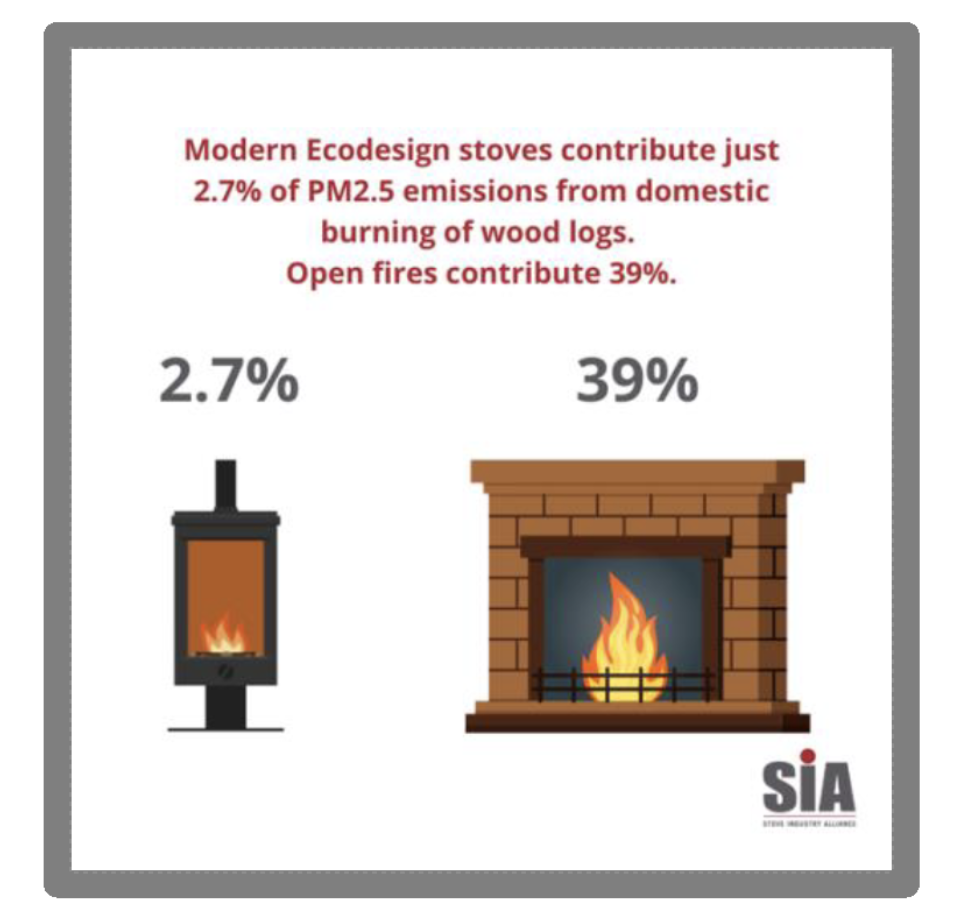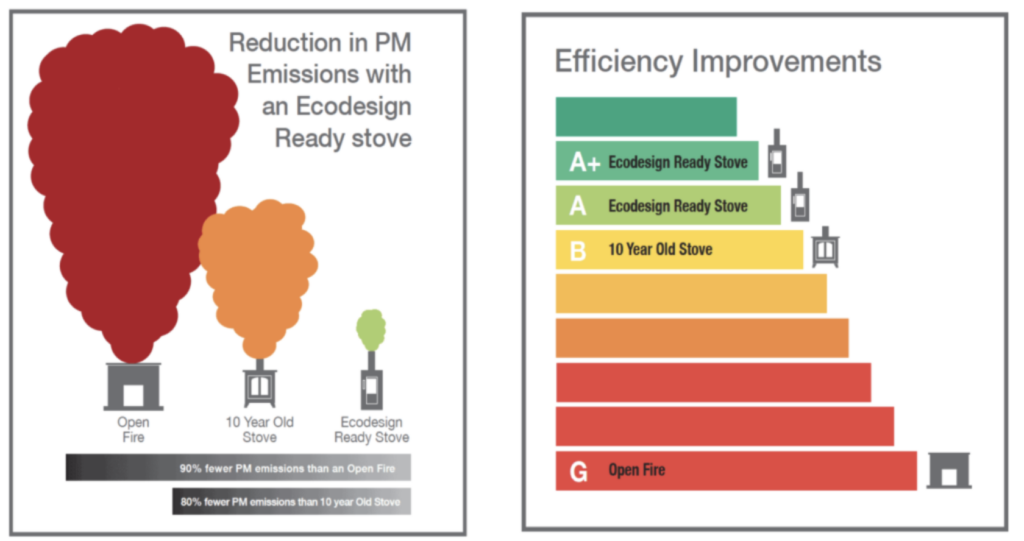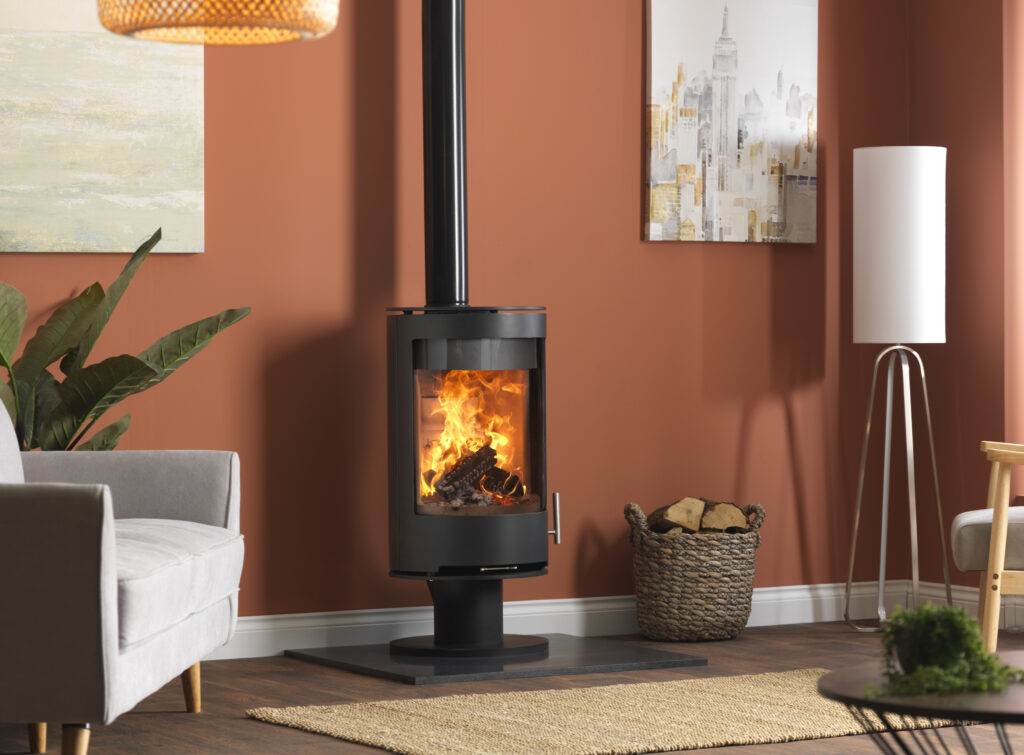When we burn wood, harmful pollutants are released, including PM2.5, which can have a devastating impact on our health.
What is PM2.5?
PM2.5, also known as fine particulate matter, refers to particles or liquid droplets in the air that have a diameter less than 2.5 micrometres across (about 3 per cent of the diameter of a human hair). Some PM2.5 is naturally occurring, such as dust and sea salt, and some are manmade, such as particulates from vehicle exhausts.
Open fires get a bad press – and for good reason. They emit lots of emissions, including PM2.5. Sadly, some media sources also tar high-efficiency wood-burning stoves with the same brush, which is incorrect and misleading.
People now realise the huge emission differences between open fires and high-efficiency wood-burning stoves.

One key reason open fires are so bad is that they require more wood fuel for the same heat output compared to a high-efficiency wood-burning stove. Furthermore, the fire does not sit behind a sealed glass window, unlike with a wood-burning stove, which has two inherent problems: 1. Much of the heat in a room disappears up the chimney, similar to leaving a window open and 2. Pollutant byproducts from the badly efficient fire ventilate, to some degree, into the room.
The stove’s glass plays a critical role in keeping you both safe and warm.
Do you own a stove? Here are a few tips to make sure you burn wood in the cleanest, most efficient way possible:
Make sure your wood is ready to burn. Dry wood produces less smoke and more heat, so it’s much cleaner and better for the environment. If you’re cutting your own logs for firewood, store them in a dry area and allow them to dry for at least 12 months. For hardwoods like oak, this can be as long as 24 months. Before you burn, use a moisture meter to check the water content of the logs. They should have a moisture level of around 20%. Having a water percentage that is too high will increase pollution, produce a poor level of heat output, and cause tar to form in your chimney. It’s important you get the right level.

Opting for the cleanest fuels: Before buying, always make sure that the fuels are suitable for your appliance. When purchasing wood look for the “Ready to Burn” logo and make sure you store the wood in a dry place.
When choosing briquettes or fire logs, select a brand that indicates it is ‘suitable for use in smoke-controlled areas’. These give off less smoke.
Service & Sweep: Getting your stove serviced regularly by an engineer will help your appliance perform better. It will use less fuel to produce more heat. The same goes for having your chimney swept. This needs to be done on a regular basis to keep clean and reduce a build-up of tar.
In a 12-month period, around 3,000 houses in England had chimney fires as a result of a build-up of tar. Most chimney fires are preventable and are largely due to infrequent sweeping. Prevention is always better (and safer!) than cure!
Make The Switch
If you have an open fire, now is a great time to switch to a wood-burning stove. In many instances, you will be able to remove your open fire and, as a direct replacement, fit a stove. There is a wide range of stoves available to fit fireplaces of all sizes. You don’t even need a traditional fireplace—many stoves, such as the Purevision PVR stove, can look great as standalone fires.









